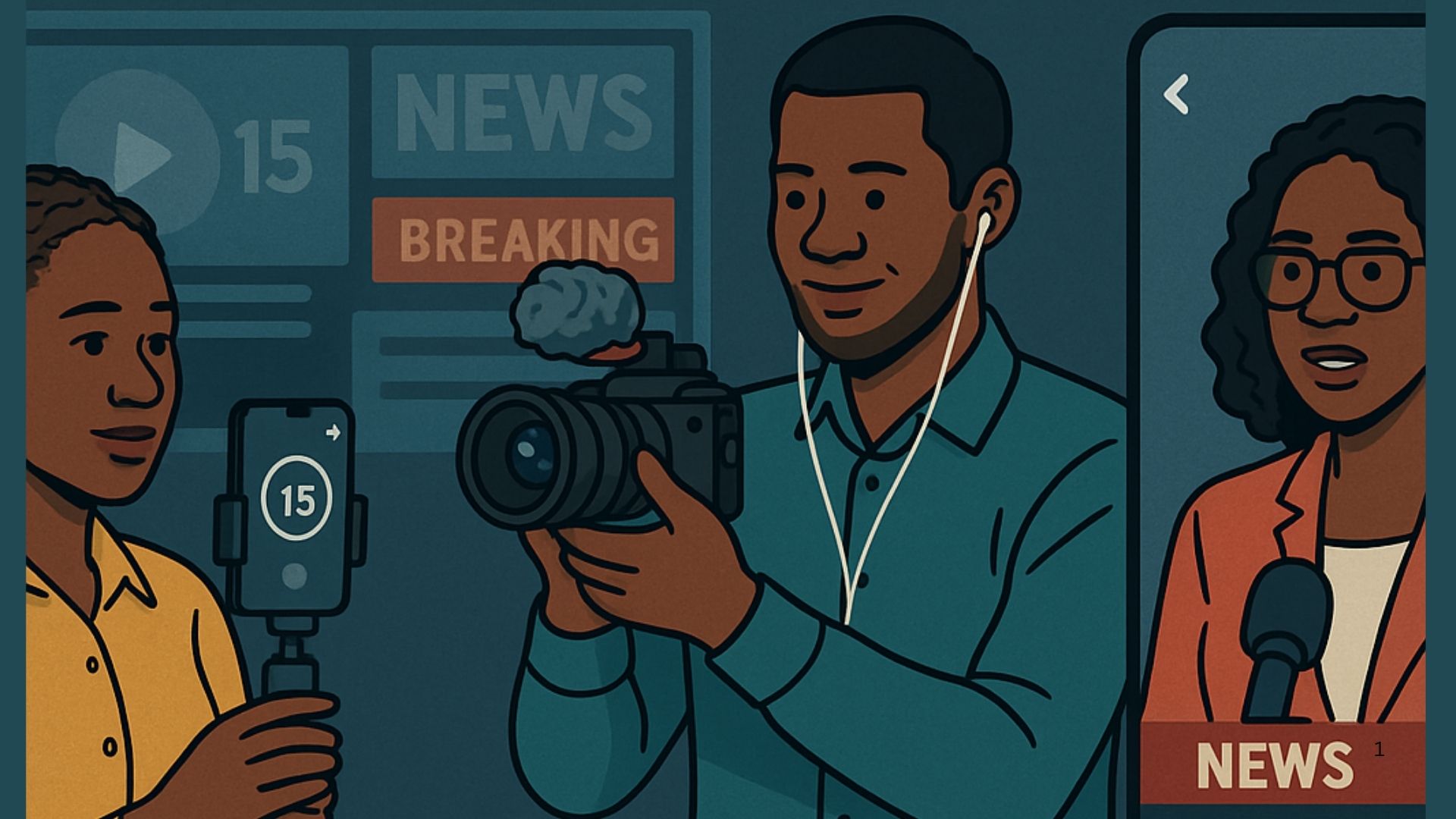The modern Nigerian newsroom is facing its toughest rival yet not another publication, but the scroll. In a world ruled by 15-second Reels, TikTok dances, and snappy YouTube Shorts, attention has become the new currency. And for many news outlets, winning that attention now means learning the language of short-form storytelling.
From Headlines to Hashtags
Traditional news once relied on long reports, print pages, and nightly broadcasts. But Gen Z doesn’t wait for the 9 PM news anymore, they live on their timelines. Nigerian outlets like Pulse Nigeria, Channels TV, and OtownGist Media are now reinventing themselves to fit this rhythm, creating bite-sized news stories that can travel fast across social media.
A breaking news clip that once needed a full TV segment is now compressed into a 30-second TikTok update, complete with captions, sound effects, and reaction emojis. The result? Stories that reach millions not through formal headlines, but through emotion, humor, and relatability.
The Rise of “News Reels”
Newsrooms across Nigeria are building dedicated teams for short-form video content. These teams focus on Reels, Shorts, and TikToks designed to hook viewers instantly. Whether it’s a street interview on fuel prices, a trending political soundbite, or a human-interest story, the aim is simple: grab attention fast, deliver context quickly, and spark engagement immediately.
For example, Arise News uses Reels to recap major interviews and political debates, while BBC Pidgin crafts 60-second explainers in conversational tone, breaking down complex stories for younger audiences. Even community platforms like OtownGist News are using Reels to spotlight local stories that mainstream outlets often overlook.
Why Short-Form Wins
The success of short-form journalism lies in its fusion of entertainment and information. Nigerian audiences are young with over 70% under 35 and they prefer to watch and feel news rather than just read it. Platforms like TikTok and Instagram reward creators who master storytelling within seconds.
For newsrooms, that means learning to:
- Lead with emotion, not exposition.
- Use subtitles and punchy captions for silent viewing.
- Turn serious issues into digestible micro-stories.
Challenges on the Fast Lane
Of course, the shift comes with risks. Compressing complex stories can oversimplify issues. Some journalists fear that depth is being sacrificed for clicks. Others struggle with adapting newsroom workflows- editing, verification, and ethics to a format built for speed.
Then there’s the issue of credibility. On platforms flooded with misinformation, standing out as a trustworthy source while still being trendy is a delicate balance. Newsrooms now face a dual mission: inform fast, but never mislead.
The Future of News Is Mobile
Despite the hurdles, one thing is clear: the future of Nigerian journalism will live on mobile screens. The most successful media brands won’t be those shouting the loudest, but those adapting the fastest.
Already, some newsrooms are experimenting with AI-driven captions, interactive story polls, and vertical live broadcasts to stay ahead. Others are investing in creator partnerships, allowing journalists with personality to become influencers in their own right.
Final Thoughts
The battle for attention is not the end of journalism, it’s its evolution. Nigerian media is proving that storytelling doesn’t die when it gets shorter; it just gets sharper.
At OtownGist Media, we believe this new era is an opportunity, a chance for local newsrooms to reach audiences they never could before, using the same tools that once disrupted them. The platform has changed, but the mission remains the same: tell the truth, make it engaging, and make it matter.
Article by Ezegbogu Princewill (Intern at OtownGist)


